Are you feeling BORED of old flowers in your garden? Looking for something special to add to your orchid collection?
Our article on VARIOUS types of orchids is what you NEED!
At AsterGardening, you get the BEST information to make your GARDENING experience AMAZING!
We TOTALLY get it; you’re PASSIONATE about flowers. Our team of experts is there to give you the RIGHT information about VARIOUS orchids and their CARE.
You’ll be CONFIDENT in growing various kinds of orchids. It brings an EXTRA level of BEAUTY to your space.
Let’s EXPLORE the world of orchids! You’re going to be AMAZED by their BEAUTY and UNIQUE qualities.

The History of The Orchids
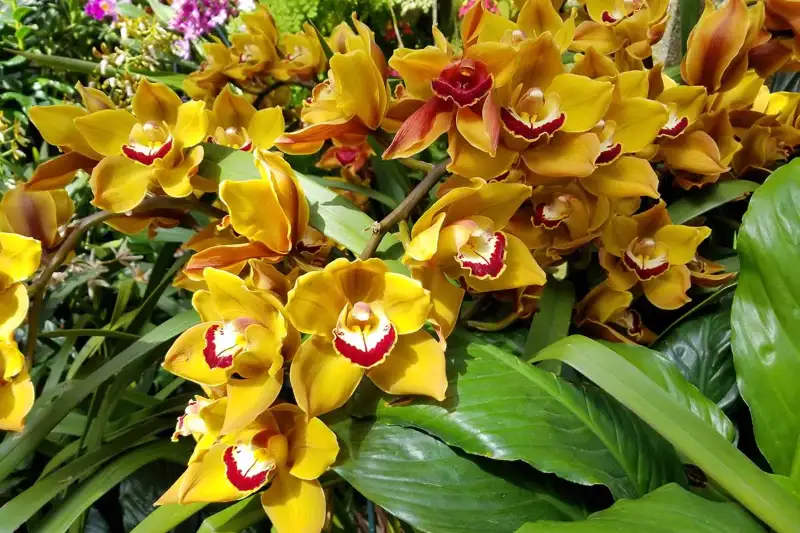
Did you KNOW that orchids have a COOL history dating back to ANCIENT times?
It’s true!
People have been talking ABOUT orchids since at least 1200 BC. They were mentioned on the walls of an EGYPTIAN tomb. That’s pretty wild.
Fast FORWARD to the 19th century, and things got even CRAZIER. Orchids became popular in Europe.
Collectors paid CRAZY amounts for RARE and EXOTIC species. It was like a whole ORCHID CRAZE or ORCHID MANIA.
Orchids are still POPULAR and seen as a SYMBOL of luxury and sophistication. You can find them in VARIOUS shapes, colors, and sizes.
They’re seriously stunning plants. No WONDER they’ve captured people’s imaginations for THOUSANDS of years!
20 Colorful Types of Orchids
WANNA check out some AMAZING orchids? I’ve got a list of 20 super colorful types that KNOCK your socks off! Seriously, these fragrant FLOWERS are STUNNERS.
1. Brassia Orchids
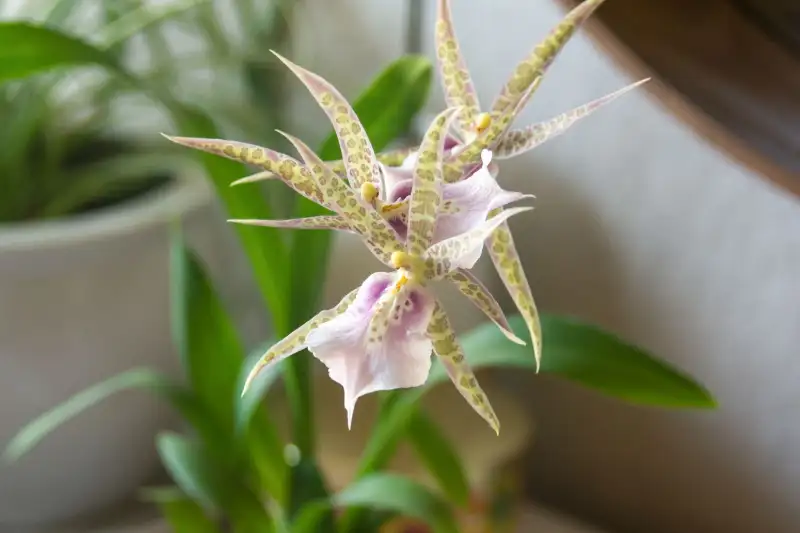
Let’s TALK about Brassia Orchids! These unusual orchids are NATIVE to South and Central America.
The COOL THING about these unusual flowers is their resemblance to a bamboo orchid. They come in many COLORS – green, yellow, brown, and more!
Plus, they HAVE long, skinny PETALS resembling spider legs. Pretty neat?
Here’s what Brassia Orchids NEED. First, they love very bright light, but NOT direct sun. They also like it humid, so you should MIST them occasionally.
As for TEMPERATURE, these orchids are HAPPY in a range of 60-80°F. And if you live in USDA zones 9-11, you’re in LUCK!
2. Bletilla Orchids

Bletilla Orchids are also known as Chinese ground orchids. These BRIGHTLY colored flowers have a HISTORY dating back to ANCIENT Chinese culture.
This terrestrial orchid comes in pink, purple, and white shades – so PRETTY!
REMEMBER, they need a potting medium that drains well and should be PLACED in a spot with partial shade.
I have experimented with them in FULL sun, and they don’t PERFORM badly either.
And HEY, they’re pretty CHILL and prefer temps between 60-80°F. They are perfect for USDA zones 5-9.
Some POPULAR types include Bletilla striata, Bletilla ochracea, and Bletilla formosana. I PREFER Bletilla striata as it is HARDY and GROW easier.
3. Cattleya Orchids

Cattleya Orchid is POPULAR among orchid enthusiasts and resembles the moth orchid. These BEAUTIES are originally from Central and South America.
Cattleya orchids or moth orchids come in purple, yellow, white, and pink flowers. These COLORS make them steal the show.
Want to MAKE your orchids super HAPPY? Ensure they get lots of bright, filtered light, humidity, and REGULAR watering.
These orchids PREFER temperatures between 60-80°F. So, they do BEST in USDA zones 9-11.
Cattleya Orchid has popular CULTIVARS, including the Cattleya aclandiae and Cattleya walkeriana.
4. Cymbidium Orchids

Cymbidium Orchids (boat orchids) are super cool! They have a FASCINATING history that goes back to ANCIENT China.
People loved them for their STUNNING looks and even used them as MEDICINE. Crazy, right?
These epiphytic orchids COME in pink, yellow, and green long-lasting flowers.
To keep your orchids HEALTHY, here’s what you need to do. ENSURE they’re in well-draining soil and get PLENTY of bright light.
Avoid too much direct sunlight and GIVE them regular watering.
Try to keep them in a TEMPERATURE range between 60-70°F. Oh, and they’re PERFECT for USDA zones 9-11.
5. Dendrobium Orchids
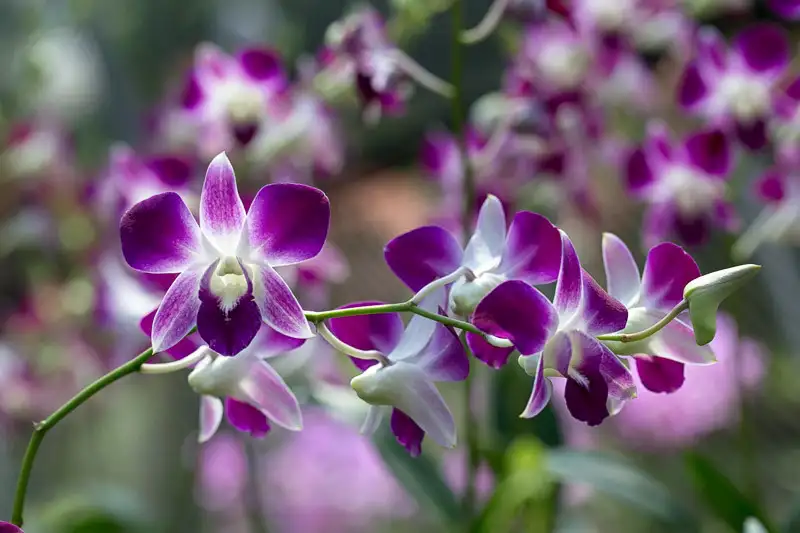
Have you HEARD about Dendrobium Orchids? They are native to Asia and come in many COOL colors, like white, purple, and pink.
Growing them will NOT keep you occupied. They like BRIGHT but filtered light, HIGH humidity, and REGULAR watering.
They’re perfect for temperatures between 60-80°F. You can FIND them in USDA growing zones 9-11.
Trust me, they’re SUPER easy to CARE for and can BLOOM multiple times yearly. I always recommend them to BEGINNER gardeners.
Check out popular cultivars: Dendrobium nobile, Dendrobium bigibbum, and Dendrobium phala.
6. Encyclia Orchids
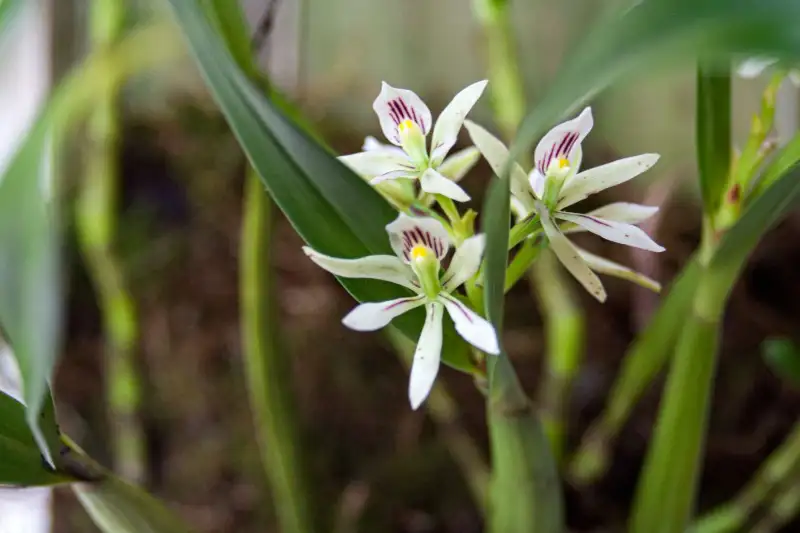
Encyclia Orchids are cuties native to tropical and subtropical REGIONS in the Americas. Most of them can be FOUND in Central America and the Caribbean.
These ORCHIDS have been around since the early 1800s. They are FAMOUS for their gorgeous orchid FLOWERS with unique SCENTS.
Encyclia orchids are AVAILABLE in pink, purple, white, and yellow flowers. They’re a breeze to cultivate and can THRIVE under various conditions.
But, they do LOVE bright, indirect LIGHT and well-draining SOIL. These babies are PERFECT for living in USDA growing zones 9-11.
7. Epidendrum Orchids
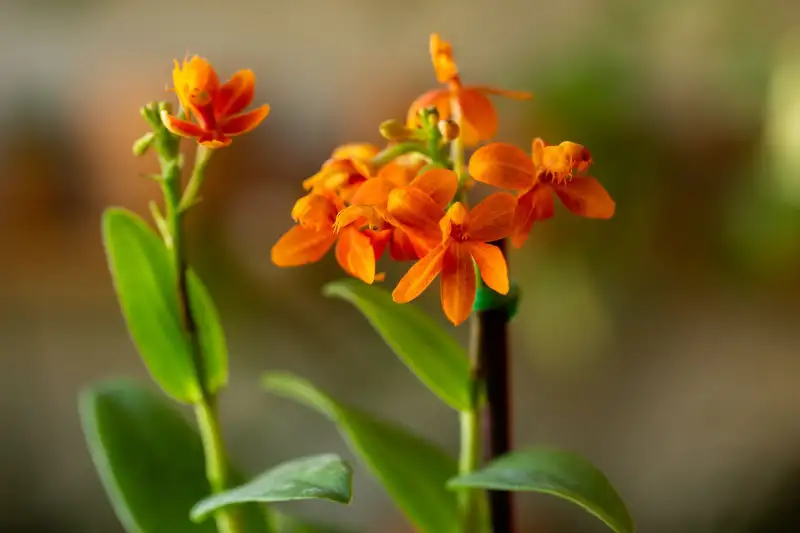
Epidendrum orchids are AMAZING plants that have been AROUND for over 3,000 YEARS. They HAIL all the way from Central and South America.
And GET this – there are over 1,000 different TYPES of them! Talk about diversity!
These orchids can THRIVE in all sorts of ENVIRONMENTS. Just ensure they get plenty of bright, indirect sunlight and USE SOIL that drains well.
If you’re in the USDA growing zones 9-11, you’re in LUCK! These BEAUTIES will LOVE it there.
From my experience; they’re perfect for BEGINNERS because they don’t need much MAINTENANCE.
8. Ludisia Orchids

Wanna HEAR about Ludisia Orchids? They’re also known as jewel orchids, and they’re just AWESOME!
These white flowers ORIGINALLY come from Southeast Asia. Their leaves are DARK GREEN with SILVER veins, which looks really COOL!
The best part about the jewel orchid? It is super EASY to grow. It doesn’t need as MUCH light as other orchid genera. So it is PERFECT for indoor growing.
You must ENSURE they’re in well-draining soil, and you’re GOOD to go!
Oh, they’re only SUITABLE for USDA growing zones 10-11. So make sure you CHECK that before getting one.
9. Laelia Orchids
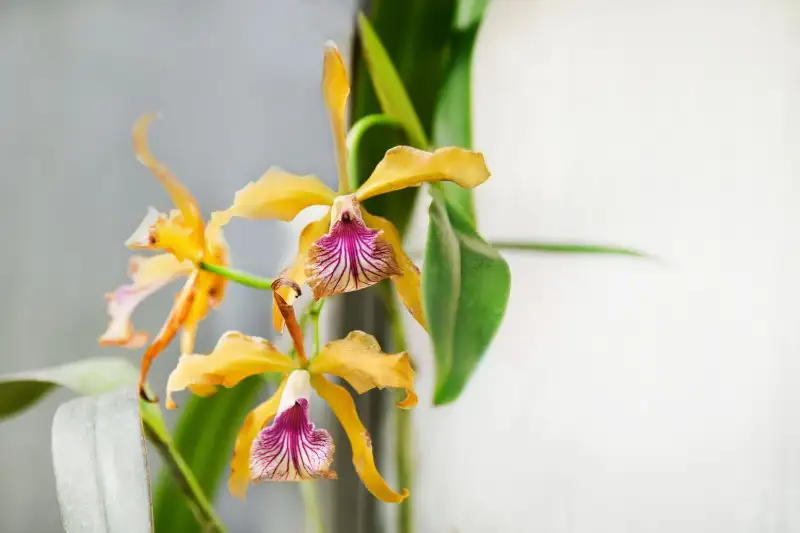
YO, have you CHECKED out Laelia Orchids? They’re all the rage right now! These beauties COME from Mexico, Central America, and Northern South America.
Let me tell you, these orchids are a real FEAST for the eyes! They COME in amazing SHADES of pink, purple, and yellow.
They can handle different environments. But, they PREFER bright, indirect light and soil draining well.
I won’t lie to you. Growing Laelia Orchid can be a BIT of a CHALLENGE. But TRUST me when I say the EFFORT is totally WORTH it.
Plus, these orchids do BEST in USDA zones 9-11.
10. Lycaste Orchids
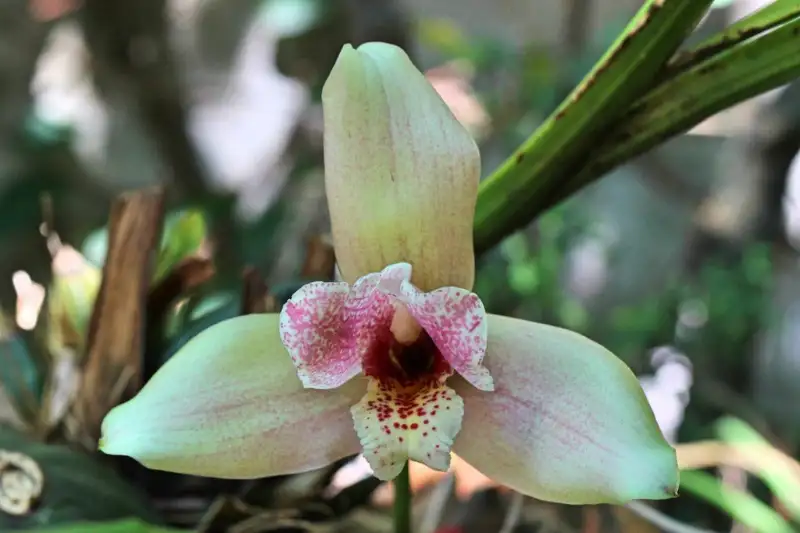
Lycaste Orchids are seriously COOL! First off, have you seen how pretty their flowers are? They’re so BIG and smell AMAZING!
Fun fact time! These orchids COME from Central and South America. People first discovered them in the EARLY 1800s. So they’ve been around for a while!
They LIKE bright light but don’t PUT them in direct sunlight. Also, make SURE the SOIL they’re in drains well.
These orchids are perfect if you’re an intermediate GROWER and want to step up your game.
OH, and one MORE thing. You can GROW Lycaste if you’re in USDA ZONES 9-11.
11. Miltonia Orchid

Miltonia Orchid (pansy orchid) is a LITTLE beauty from Brazil. It loves to grow in the cool and damp FORESTS of the country’s Southeastern part.
Miltonia orchids RANGE from pink and yellow to white and purple. They’re like a rainbow in plant form, similar to phalaenopsis orchids!
And they’re super EASY to take care of, too. You only need to GIVE them bright, indirect light and a well-draining GROWING medium.
You can GROW this orchid plant if you live in USDA zones 10-12! Its UNIQUE fragrance will fill your home with a LOVELY scent.
12. Maxillaria Orchids
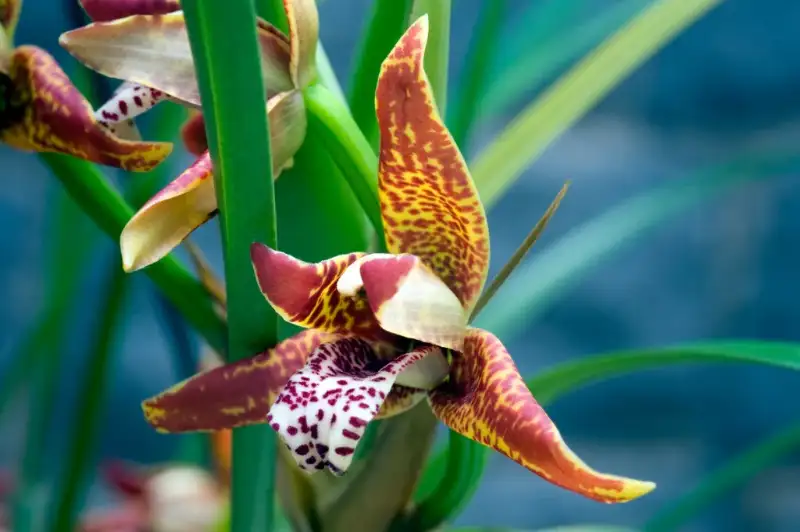
Maxillaria Orchid is KNOWN as a spider orchid. Do you know why? Because it LOOKS like a spider and COMES from Tropical America.
They’re COOL, with COLORS like yellow, orange, and red. If you’re into TROPICAL plants, these are worth checking out!
This orchid family THRIVES with PLENTY of bright, indirect light and high humidity. I like to give them a good MISTING every so often to ensure they get enough MOISTURE.
I’ve FOUND spider orchids to do WELL mounted on tree bark or in a well-draining growing MEDIUM.
They do great in USDA zones 9-12. Trust me, they’re pretty AWESOME!
13. Oncidium Orchid
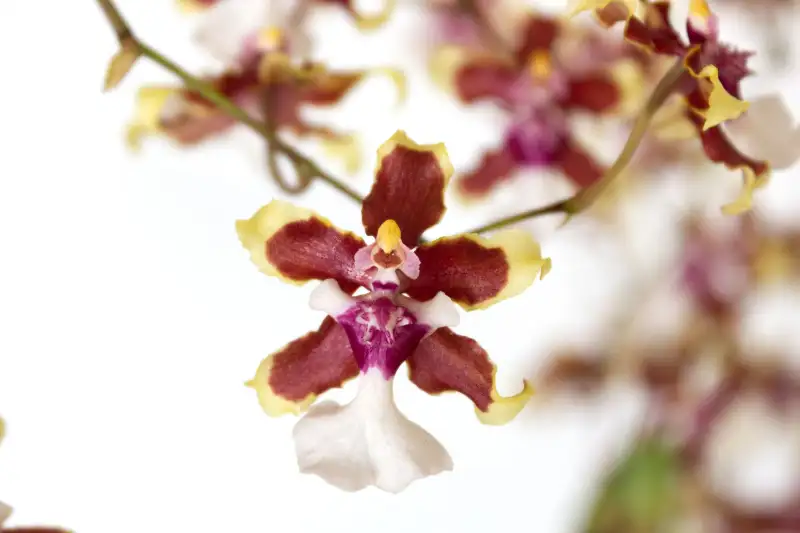
YO! Let’s CHAT about oncidium or dancing lady orchids! These babies are NATIVE to South and Central America. They chill out in the WARM, STICKY forests of the area.
They COME in all colors, from sunny yellow to pretty pink and a fierce red flower spike.
To get them to THRIVE, they need some BRIGHT but INDIRECT light. Provide them with a growing MEDIUM that drains like a boss.
The cool thing is that these fragrant BLOOMS smell like no other! They’re basically famous for their unique FRAGRANCE.
You can grow these early spring orchids if you live in USDA zones 9-12.
14. Phaius Orchids
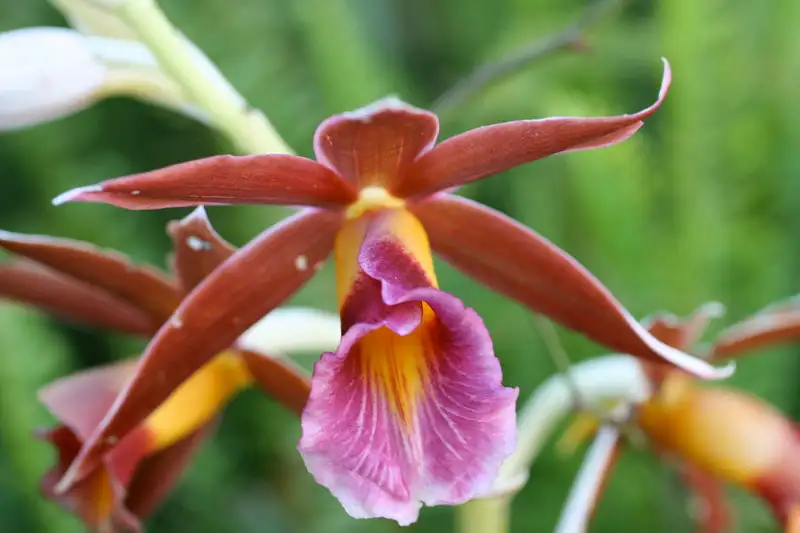
Phaius Orchids and cool plants are ORIGINALLY from Southeast and tropical Asia. They are FAMOUS by the name nuns orchids.
The REASON is their leaves RESEMBLE a nun’s dress. Pretty neat?
They LIKE bright light but not direct sunlight. So, ENSURE they get shade during the HOTTEST PART of the day.
In my experience, I’ve found that these plants do WELL in a well-draining soil mix. Remember to give them a good MISTING occasionally to keep them happy.
If you live in the USDA growing zones 9-12, you’re LUCKY because these orchids can grow well there.
15. Phragmipedium Orchids
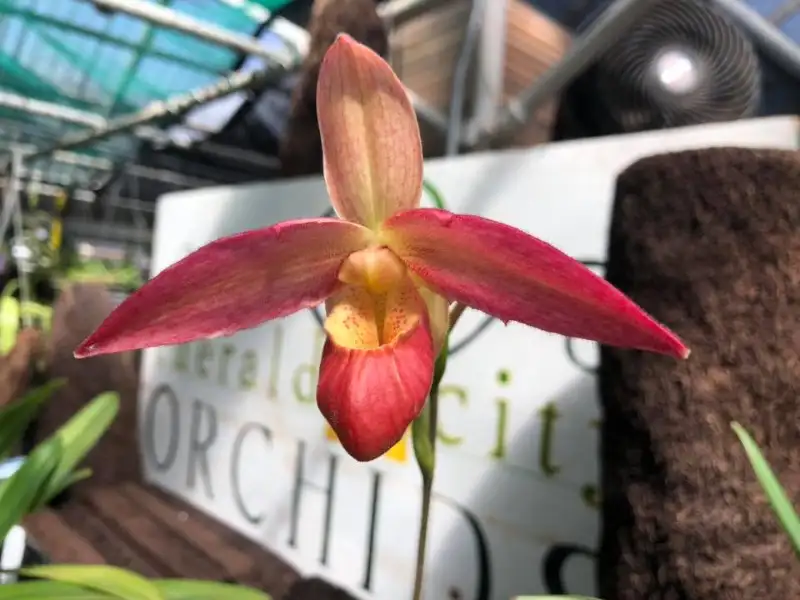
WANNA learn about Phragmipedium Orchids? They’re from South America and LOVE cool and damp forests.
These orchids COME in different colors, like pink, yellow, and green. Cool, right?
To CARE for them, ensure they get some BRIGHT but INDIRECT light. Provide them a good growing medium that drains well.
If you live in USDA growing ZONES 9-12, you can GROW these beauties in your BACKYARD!
From what I’ve seen, these orchids need a CONSISTENT watering schedule. So remember to WATER them REGULARLY.
If you want to be FANCY, try using a semi-hydroponic growing system for them. Trust me, they’ll LOVE it!
16. Psychopsis Orchids

Psychopsis Orchids, or butterfly orchids, come from Central and South America. Way BACK in the 1800s, a German botanist first FOUND them.
Psychopsis orchids BLOOM is one cool thing about them. They LOOK like little butterflies FLYING around with yellow, red, and brown coloring. So cute!
These wild orchids LIKE to have plenty of bright, but NOT direct, sunlight. Plus, they need a lot of humidity and soil THAT drains well.
You’ll want to KEEP them in WARM places too. You can plant them in the USDA growing zones 9-11.
17. Paphiopedlium Orchids
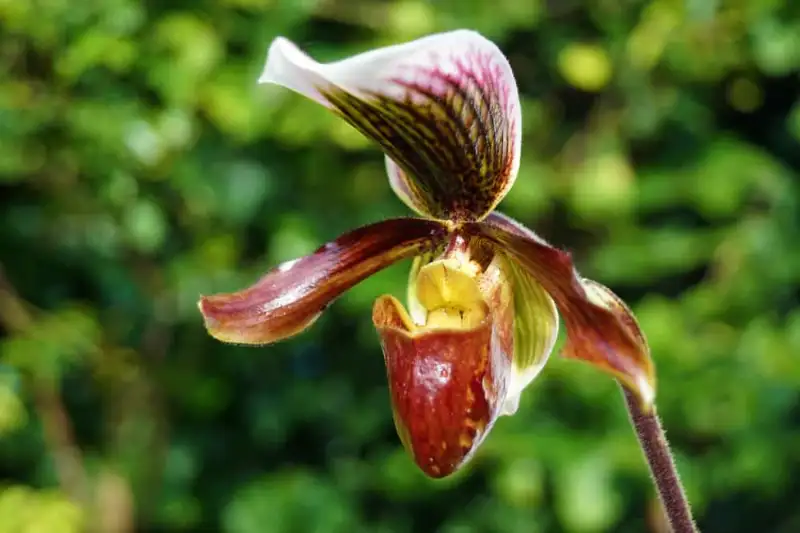
Paphiopedilum Orchid is also known as SLIPPER ORCHID. It is NATIVE to Southeast Asia and The Pacific Islands and was first discovered in the 1800s.
Since then, we’ve developed LOADS of different HYBRIDS and CULTIVARS. They COME in all sorts of colors and flower shapes.
And you know what’s really COOL about these lady’s slipper orchids? They have a unique LIP that looks like a SLIPPER and gives POLLINATORS a place to land!
They remain happy in bright but indirect light, high humidity, and soil that drains well. REMEMBER that they’re best SUITED for USDA growing zones 10-12.
18. Stanhopea Orchids
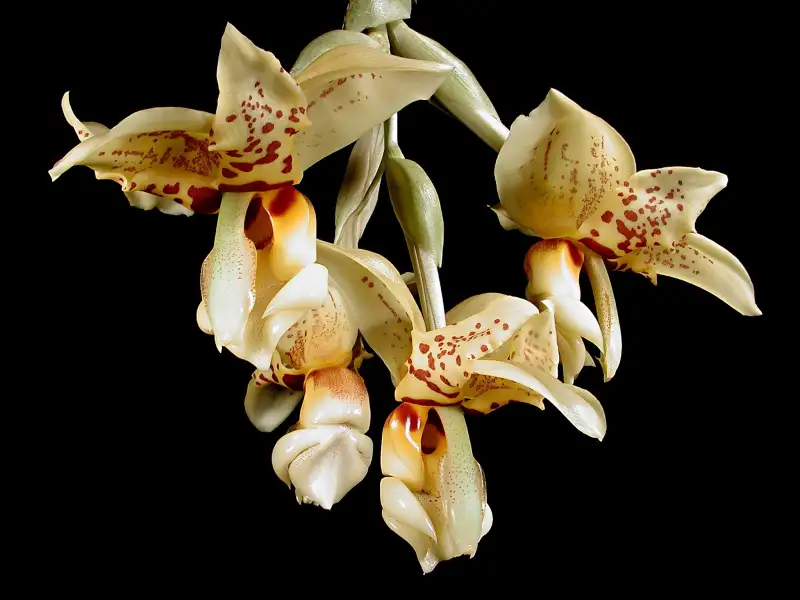
Stanhopea Orchids are super cool plants native to Central and South America.
One of the COOLEST things about these wild orchids is their BEAUTIFUL flowers. These flowers BLOOM on a long, droopy flower spike.
They need LOTS of space. Because they grow sideways, which can be a bit TRICKY.
Ensure to give them plenty of bright, indirect light and keep the HUMIDITY high. They also like to be in well-draining SOIL and prefer WARMER temperatures.
If you’re wondering where to GROW them, they’re best suited for USDA growing zones 10-11.
19. Vanda Orchids

Vanda Orchids are ORIGINALLY from Southeast Asia. They are FAMOUS for their stunning flowers that can hang out for up to two months!
These flowering plants come in various COLORS. Their flower spikes are from blues and purples to pinks and yellows.
Taking care of these BEAUTIES is not DIFFICULT. You’ll need to GIVE some bright, indirect light, high humidity, and soil that DRAINS WELL.
These orchids do best in USDA growing zones 10-12. CREATE the right CONDITIONS for them in colder climates.
Only it requires a little bit of TLC. It will help your Vanda orchid THRIVE and SHOW OFF those stunning blooms!
20. Zygopetalum Orchids
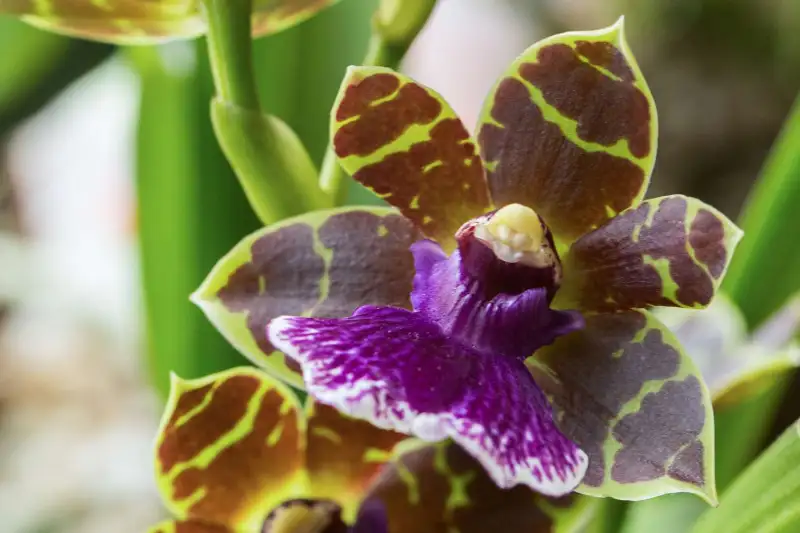
ZYGOpetalum orchids are NATIVE to South America. They were DISCOVERED by Karl von Zygopetalum way back in the 1800s.
What sets these orchids APART is their colorful BLOOMS. They come in different shades of green, purple, and burgundy.
Ensure they GET bright enough, have indirect light, and KEEP the humidity level HIGH. Also, well-draining soil is a MUST!
These orchids prefer cool to moderate temperatures. So they’re PERFECT for USDA growing zones 10-12.
I have tried GROWING them in a greenhouse setting. It offered me more CONTROL over the condition.
They felt to me like an AROMATHERAPY SESSION due to their STRONG fragrance!
FAQs about Types Of Orchids
1. How long do orchids live for?
The lifespan of most orchid species depends on the types and growing conditions. Some orchid species can live for several decades. However, many species may only live for a few years. So, the life period is subjective to the type of orchids.
2. What is the rarest orchid color?
The rarest orchid color is blue. The thing is, naturally occurring blue pigments are not common in orchids. However, some hybrids and genetically modified orchids may have blue coloration. Vanda coerulea orchid is one of the rarest blue orchids in the world.
3. How can you tell if an orchid needs water?
One way to tell if an orchid needs water is by checking the moisture level in the potting medium. Stick your finger about an inch deep into the mix. If it feels dry, then the orchid likely needs water.
4. How many types of orchids are there?
There are over 25,000 different orchid varieties. An increasing number of hybrids makes it difficult to determine an exact number. Orchids come in a wide variety of shapes, sizes, and colors. They are found in almost every part of the world.
What’s Next
Alrighty, folks! Time to wrap up and SUMMARIZE all we’ve LEARNED about orchids.
These BABIES have been around for CENTURIES. They are SUPER popular for their beauty and uniqueness.
SERIOUSLY, there’s an orchid out there for EVERYONE. So why not give it a SHOT? There are NUMEROUS options available.
Finding an orchid that captures your heart is just a hop, skip, and jump AWAY. Who knows, you might be the next orchid FANATIC!
Check out AsterGardening‘s website to LEARN more about other ORCHIDS and FLOWERS. They got what you need to become a GREEN THUMB!
Tips, TRICKS, and SOLUTIONS – you NAME it, they got it. So why not GIVE it a SHOT? You’ll be AMAZED at how EASY and REWARDING gardening can be!
